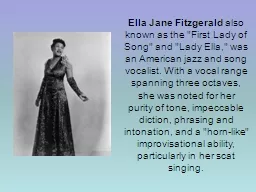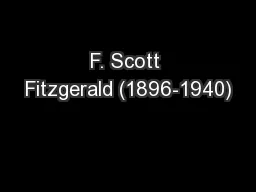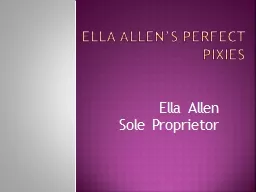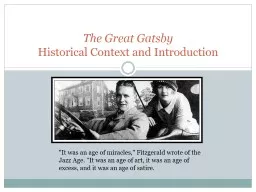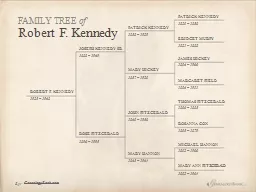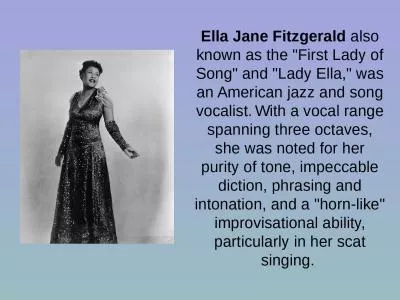PPT-Ella Jane Fitzgerald
Author : liane-varnes | Published Date : 2017-01-18
also known as the First Lady of Song and Lady Ella was an American jazz and song vocalist With a vocal range spanning three octaves she was noted for her
Presentation Embed Code
Download Presentation
Download Presentation The PPT/PDF document "Ella Jane Fitzgerald" is the property of its rightful owner. Permission is granted to download and print the materials on this website for personal, non-commercial use only, and to display it on your personal computer provided you do not modify the materials and that you retain all copyright notices contained in the materials. By downloading content from our website, you accept the terms of this agreement.
Ella Jane Fitzgerald: Transcript
Download Rules Of Document
"Ella Jane Fitzgerald"The content belongs to its owner. You may download and print it for personal use, without modification, and keep all copyright notices. By downloading, you agree to these terms.
Related Documents

